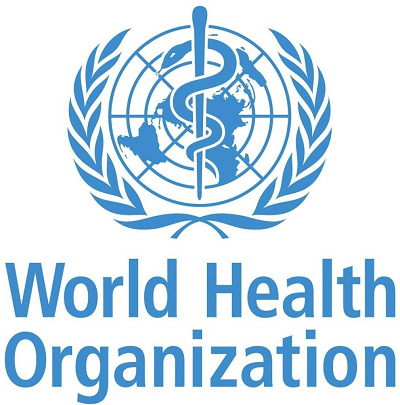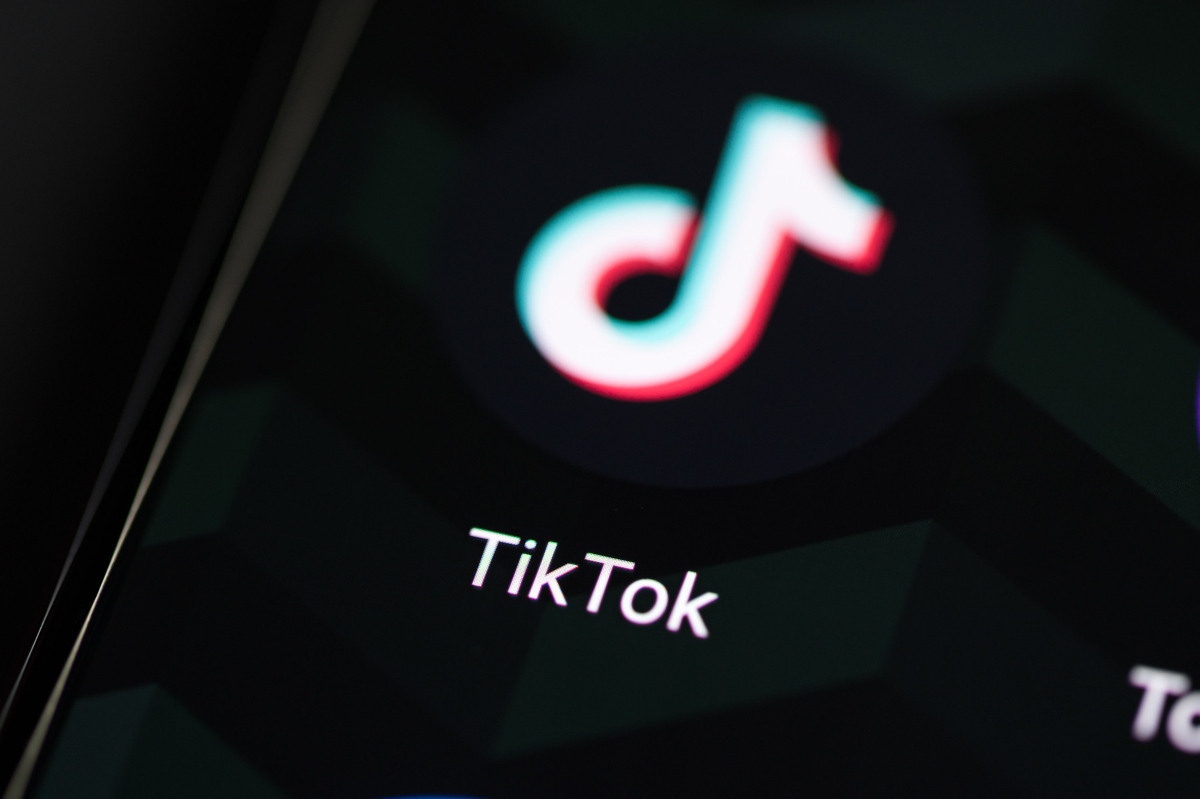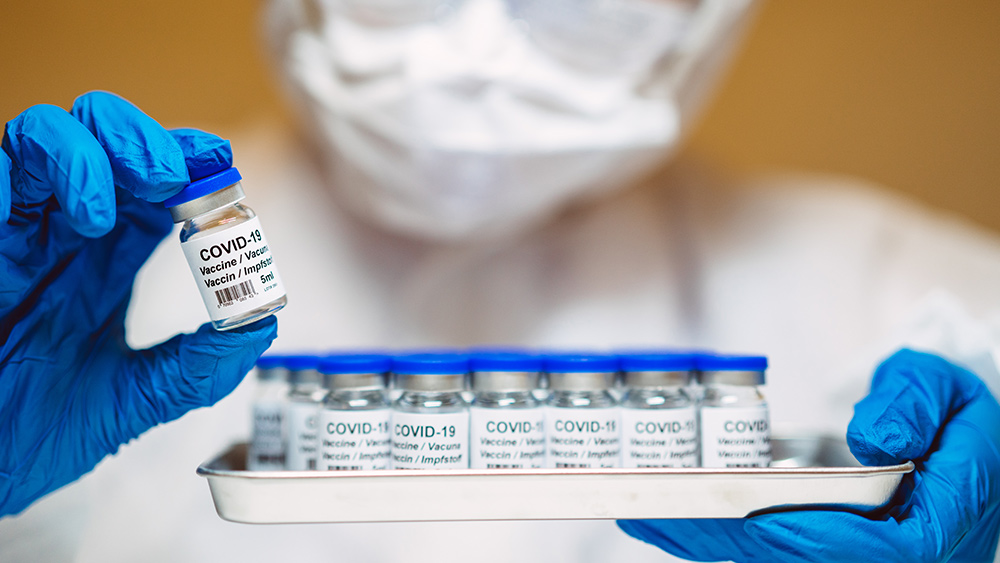 Parler
Parler Gab
Gab
“These kinds of distortions and half-truths that find their way into the public domain do enormous harm, both by leading people to behavior that is detrimental to their health and by causing them to eschew interventions that would improve their health. “A purely reactive mode is not appropriate, particularly in this new era of social media.”Califf said, at the time, that he expected to take about a year to develop a strategy to combat medical “misinformation,” in a process that would involve public meetings. Six months into his term, on Aug. 5, 2022, Califf tweeted:
“The distortions and half-truths of misinformation and disinformation pose enormous dangers to the effectiveness of science and to public health itself, through the negative impact it has on individual behavior. “That’s why I’ve made combating misinformation one of my priorities. Providing factual info is the key to helping people make the best informed decisions about their health.”According to Pharma Intelligence, Califf’s interest in targeting so-called “misinformation,” particularly on social media platforms, stems from his previous job at Verily, a life sciences company owned by Google’s parent company, Alphabet Inc. Califf has frequently panned the proliferation of communication channels and platforms for this alleged rise in “misinformation.” Speaking at the TCT 2022 (Transcatheter Cardiovascular Therapeutics) conference, Califf said the FDA in the past would make decisions and then employ a system it had in place to directly communicate those decisions to hospitals, health systems, pharmacies, insurers and others. Now, FDA announcements are often met with “faux outrage and lies,” according to Califf, making it difficult for the “average patient to separate the truth from the lies.” During an Aug. 3, 2022 conversation with the editor of Health Affairs, Califf said, “vaccines are basically working,” but nevertheless, millions of people are refusing them, leading him to admit that the FDA is “actually losing the battle on misinformation.” Califf reiterated this sentiment in his interview with the AP. “We’re now in a 24/7 sea of information without a user guide for people out there in society,” he said. “So this requires us to change the way we communicate.” Califf has made similar statements over the past 12 months. Earlier this year, at the 2023 Innovations in Regulatory Science Summit, Califf said, “I actually believe that misinformation is the leading cause of death right now in the U.S. … We were just not prepared for what broad access to the Internet would do to communication channels.” In an Aug. 22, 2022, article published in the Journal of the American Medical Association, Califf wrote that “the global information environment has been contaminated by misinformation and disinformation.” He added:
“The FDA must be more proactive in preempting and countering misinformation [there is a need for] collaboration across sectors to create an information environment in which decisions [by] consumers, patients, and clinicians are more likely to be informed by reliable information based on high-quality evidence from trustworthy sources.”Speaking to CNN on May 8, 2022, Califf said though “almost no one” in the U.S. should be dying from COVID-19, misinformation was affecting the COVID-19 death toll. However, he conceded that there is “no way to quantify” this statement, although he claimed an “erosion of life expectancy” is an indicator lending credence to his claim. Addressing the Health Journalism conference in April 2022, he again stated that misinformation “is now our leading cause of death,” citing examples such as the use of ivermectin to treat COVID-19. A statement by Califf on the FDA’s website also repeats these claims, stating “I strongly believe that misinformation is a leading cause of preventable death in America now,” again accompanied by the following qualifier: “While, of course, this cannot be proved, the situation with COVID-19 is instructive.” Comparing alternative therapies for COVID-19 to “snake oil,” Califf went on to say in the same statement that “most of the COVID-19 deaths since vaccines and antivirals became available were preventable if people had gotten updated on their vaccination status and, if high risk and infected, had they been treated with an authorized antiviral.” Also in the same statement, Califf said the FDA “will be working on a strategy to fulfill our stated mission of ‘helping the public get the accurate, science-based information they need to use medical products and foods to maintain and improve their health’ in the face of a tsunami of confusing and misleading information,” doing so in collaboration with the Reagan-Udall Foundation as part of a new project this year. The Reagan-Udall Foundation “is an independent 501(c)(3) organization created by Congress ‘to advance the mission of the FDA to modernize medical, veterinary, food, food ingredient, and cosmetic product development, accelerate innovation, and enhance product safety.’” In other statements made last year, Califf cited digital technologies as “the real crux” of the spread of supposed misinformation, stating “everyone has access, almost everyone has a cell phone, and the minute something is said by the FDA, for example, there’s an avalanche of conflicting, differing opinions.” Referring to that era as “the good old days,” Califf bemoaned the loss of the previous “hierarchy of information transmission” where “the patients were at the end of that funnel.” FDA takes to Twitter, Instagram, YouTube to craft its message In his interview with the AP, Califf said he believes “the FDA’s word is still one of the most highly regarded pieces of information people want to see.” According to PR Week, “That leaves the FDA with its current option: crafting the messaging itself. There is, however, a bit of a problem when the messaging is left in the FDA’s hands.” PR Week in August 2022 quoted Jeffrey Blevins, Ph.D., a University of Cincinnati journalism professor, who said that, up until now, the FDA’s social media strategy has been ineffective. “The reason why a lot of their previous approaches are ineffective is they approach the problem like a professor would: here’s information, here are facts, here’s straightforward stuff,” Blevins said. “People tend to respond to emotional content more so than anything on social media.” According to the AP, the FDA’s answer to this is “Short YouTube videos, long Twitter threads and other online postings debunking medical misinformation, which the agency says includes bogus COVID-19 remedies like ivermectin, the “anti-parasite drug intended for farm animals.” On April 26, 2022, for instance, the FDA tweeted, “Hold your horses y’all. Ivermectin may be trending, but it still isn’t authorized or approved to treat COVID-19.” And on Instagram, the FDA created memes of Scooby-Doo and SpongeBob urging Americans to get boosted and ignore misinformation, the AP reported. Califf told the AP that the FDA keeps track of “new misinformation trends online” and makes quick decisions as to when — or whether — to intervene. PR Week cited a TikTok trend that went viral last year — the “NyQuil Chicken” challenge, which involved people cooking chicken breast in cough syrup — to claim that “there’s a clear pattern of health misinformation trending across social media platforms,” including “when hydroxychloroquine was promoted as a treatment for COVID-19.” Blevins told PR Week the lack of social media regulation by government “undercuts agencies like the FDA to be able to reach out to TikTok and say, ‘Hey, this is problematic.’” Nevertheless, according to Fierce Pharma, Califf has “fully embraced” Twitter and, despite it being taken over by Elon Musk — who pledged freedom of speech on the site — “is now imploring users to stay on the site.” “The easy thing to do would be to abandon using Twitter, but that’s not the right thing for us to do at this time,” Califf said. “More than ever before, it’s important that FDA continues to use Twitter for good and do everything in our power to protect the public from potential harm,” Califf said, adding he still “believe[s] in the power of social media being used for good.” Does the public trust the FDA and its messaging efforts? Leticia Bode, Ph.D., associate professor of communication, culture and technology at Georgetown University, told the AP the FDA is “moving in the right direction” on the issue of “misinformation.” Bode cited the agency’s “Just a Minute” series of “fact-checking” videos featuring Dr. Peter Marks, director of the FDA’s Center for Biologics Evaluation and Research, as an example. However, Brendan Nyhan, Ph.D., professor of political science at Dartmouth College, told the AP, “FDA’s YouTube videos have a miniscule audience,” adding that those who are watching them “are not the people we typically think about when we think about misinformation.” According to Pharma Intelligence, FDA officials, perhaps cognizant of this, have “joked about the possibility of having a regular TV segment to explain its activities,” although “Califf believes the networks would not want it.” Other communication experts interviewed by the AP “also questioned whether [the FDA is] reaching enough people to have an impact — and whether separate FDA controversies are undercutting the agency’s credibility.” “In the last two years the FDA has come under fire for its controversial approval of a questionable Alzheimer’s drug as well as its delayed response to a contaminated baby formula plant, which contributed to a national supply shortage,” the AP noted. Perhaps illustrating the impact of this credibility crisis, a May 2021 study by the Robert Wood Johnson Foundation and the Harvard T.H. Chan School of Public Health found that positive ratings of the public health system in the U.S. dropped by nearly 10 points over the past decade. And a 2022 study by The COVID States Project found that a third of respondents who “believe coronavirus vaccine misinformation” understand that they are “in disagreement with scientists and medical experts.” Lawrence Gostin, J.D., LL.D., a professor of global health law at Georgetown University, told the AP, “If you’re trying to counteract misinformation on social media your first job is to clarify, simplify and explain things in an understandable way to the lay public. I don’t think anyone could say that [the] FDA has done a good job with that.” Gostin said the FDA’s reliance on experts to craft public health messages, which are then channeled through the media and “are often laden with scientific jargon,” results in “utter confusion” among the public. “It’s not fair, but it doesn’t take too many negative stories to unravel the public’s trust,” Bode conceded. But Califf stands by the power of the FDA’s word — and its seal of approval for medical products. In a statement on the FDA’s website, he wrote:
“If you turn on the television or social media, you readily see the power and value of the FDA’s approval or clearance — both advertisers and newscasters refer to ‘FDA approval’ as an important stamp of quality of a product.”However, according to the Regulatory Affairs Professionals Society (RAPS), several current and former FDA commissioners have said that “the agency needs partners in combatting public health misinformation, and industry, clinicians, patient advocates and academic leaders all have a role to play.” Mark McClellan, M.D., Ph.D., who served as FDA Commissioner 2002-2004, said that even though there are low levels of trust in public health agencies, people still do trust their own physicians, community leaders and those who are “close to their experience,” and that the FDA should utilize such individuals in its messaging. In several recent statements, Califf also made this point. He told attendees at the TCT 2022 conference:
“The government can’t fix this problem. There is too much mistrust already. We need all of you to take this problem seriously, stay involved in your communities and make sure the truth is communicated to people in a way that they understand.”According to RAPS, Califf has “called out the academic community for not doing more on the misinformation front and said some of their criticism of FDA and other public health agencies is having unintended consequences.” Califf last year referred to academics as the “Twitterati,” saying this group includes “many of my friends,” who may disagree with 5% of what the FDA does, but “would only talk about the other 5%.” On March 31, 2022, during the Stat Breakthrough Science Summit, Califf said:
“We also need to call out our friends in academic medical centers, universities, other places, who as far as I’m concerned are by and large asleep at the wheel right now. “They need to be paying a lot of attention to what people who live in their areas are taking as the truth and focusing on getting the truth to those people.”Speaking to the Association of Health Care Journalists, Califf also implored journalists to play a part, asking them to “avoid clickbait, lean into fact checking, make sure the headline matches the copy, and take other steps to responsibly convey news about Covid-19 and other pressing health concerns.” “People are distracted and misled by the medical information Tower of Babel, but journalists like yourselves play an important role here and your work has a tremendous impact on public trust,” he added, while he told Fierce Pharma, “I encourage you to use your voices to bring that light to the surface to drown out the darkness. Be a part of the solution.” And in his most recent AP interview, Califf said, “Anyone who thinks the government’s going to solve this problem alone is deluding themselves. We need a vast network of knowledgeable people who devote part of their day to combating misinformation.” According to Blevins, this means the onus falls on public interest groups, NGOs, educators and parents. FDA’s ‘Rumor Control’ initiative developed out of ‘Virality Project’ The FDA already has launched a number of initiatives to counter “misinformation” — most notably the “Rumor Control” initiative inaugurated on Aug. 5, 2022. “Rumor Control” “debunks a long list of false claims about vaccines, such as that they contain pesticides,” according to the AP, which reported that a “Google search for ‘vaccines’ and ‘pesticides’ brings up the FDA’s response as a top result, because the search engine prioritizes credible websites.” “The growing spread of rumors, misinformation and disinformation about science, medicine, and the FDA, is putting patients and consumers at risk,” according to the FDA’s Rumor Control webpage. “We’re here to provide the facts.” The initiative asks the public to do “three easy things” to “stop rumors from spreading”: “don’t believe the rumors,” “don’t pass them along” and “get health information from trusted sources like the FDA and our government partners.” However, according to Endpoints News, the FDA’s “Rumor Control” initiative “raised a few eyebrows as any government webpage attempting to control a storyline would.” Endpoints noted that “messaging like, ‘Don’t believe the rumors,’ may even end up being counterintuitive and difficult for the general public to understand in context.” “Rumor Control” appears to have been inspired by an initiative developed by the Virality Project, “a coalition of research entities” from six institutions “focused on supporting real-time information exchange between the research community, public health officials, government agencies, civil society organizations, and social media platforms.” The Virality Project says its objective “is to detect, analyze, and respond to incidents of false and misleading narratives related to COVID-19 vaccines across online ecosystems, enabling civil society and health communicators to ultimately mitigate the impact of narratives which might otherwise undermine the public’s confidence in the safety of evidence-based policies in the United States.” The project claims it provides “actionable situational awareness and response capabilities for public health officials and other partners on the front lines of providing accurate vaccine-related information to the public.” The Virality Project described the “Rumor Control” webpage as “a centralized website offered by a trusted voice sharing facts and information in order to anticipate and respond to emerging narratives,” adding:
“This approach to debunking misinformation draws on literature suggesting that debunking messages coming from rumor control centers can help prevent rumor spread. “Psychologists have concluded that messengers that are perceived as having high trustworthiness and expertise are most effective at debunking falsehoods, meaning a debunking approach that aggregates facts from trusted subject matter experts could be ideal. “Additionally, in the vaccine context, a study suggests that trustworthy sources of information highlighting expert consensus around known vaccine-related facts and findings can increase general support for vaccines.”“Strong partnerships with community-specific subject matter experts and liaisons are critical to this workflow. Partners can include state and local government offices, civil society members, NGOs, and individual organizers” who “will also be the core amplifiers of Rumor Control postings to each target audiences,” the Virality Project adds. “Rumor Control” isn’t the only FDA anti-“misinformation” effort. In April 2022, during National Minority Health Month, the FDA’s parent agency, the U.S. Department of Health and Human Services (HHS), launched its “Give Your Community a Boost” initiative. This effort aimed to increase “health promotion through combatting misinformation and building trust with diverse communities,” including creating “multi-media outreach materials to address vaccine confidence and support FDA efforts to combat COVID-19,” including translation of COVID-19 vaccine information into more than 20 languages. HHS, along with the Centers for Disease Control and Prevention (CDC), also recently launched a grant application process for the development of a “public health tool” to predict vaccine “misinformation trends.” The final grantee will be selected on March 7. Califf also supported the establishment of a “better evidence-generation system” that will utilize “expert networks” to develop “reliable information” and fact-check, and the release of information related to complete FDA response letters, as another potential means of fighting purported “misinformation.” According to the AP, Califf also supports the concept of “prebunking” by “introduc[ing] people to emerging information and explain[ing] why it’s false before they encounter it elsewhere.” However, the AP said prebunking “presents challenges for large government agencies” which may not be nimble enough to quickly react to new trends. The Virality Project developed a set of “pre-bunk strategies for public health communicators,” stating that according to “recent misinformation research on inoculation theory, pre-bunking misleading narratives before they reach a large audience potentially offers an important tool for public health communicators.” Regarding vaccines, suggested strategies include explaining “how the vaccine works,” detailing “what to expect from vaccination,” streamlining “communication about vaccine updates” and showcasing “the stories of community members,” with a “focus on themes, not incidents,” being “upfront about uncertainties,” avoiding “data and statistics” and adapting “to the contexts of communities.” Adapting pro-vaccination messages for specific communities was also the idea behind the Mercury Project, sponsored by the Rockefeller Foundation and other nonprofits, with an aim toward “nudging” various communities to achieve “differential impacts across socio-demographic groups.” According to RAPS, some former FDA commissioners, including Dr. Scott Gottlieb, who served 2017-2019, also suggested giving the pharmaceutical industry “more leeway to counter false or misleading information about products” via their own messaging. “I think sponsors need to have the ability to defend their products in the marketplace of ideas when there’s true misinformation,” said Gottlieb. Califf appears supportive of this idea, telling the 2023 Innovations in Regulatory Science Summit, “The Internet has 24×7 freedom, but those whose products are being vilified have their hands tied because of all the regulations and issues that they worry about.” Separately, Califf told this year’s J.P. Morgan Healthcare Conference, “It’s very hard for the industry to respond to that because there’s so many checks and balances of the rights of industry that have speech about their product. So that’s an issue that we’re going to need to think through and address,” though he warned against “let[ting] loose the reins too much.” As far back as 2014, the FDA was concerned about the ability of firms to respond to “misinformation” posted online, issuing a guidance document suggesting a firm’s communication should “be relevant and responsive to the misinformation,” “be limited and tailored to the misinformation,” “be non-promotional in nature, tone, and presentation,” “be accurate” and provide full disclosure of affiliation. Too little, too late for the FDA? Nevertheless, the FDA may be facing an uphill battle, as multiple factors are combining to foster public mistrust toward the agency. For instance, in January, Frank Yiannas, the FDA’s deputy commissioner for food policy and response, resigned over concerns about the FDA’s oversight structure and the ongoing infant formula shortage. A 2022 study by The BMJ found that the FDA gets 65% of its funding for drug evaluation from industry user fees, while another 2022 study found that 95% of the members of an HHS committee that establishes dietary guidelines for Americans have one or more conflicts of interest with industry actors. As previously reported by The Defender, members of the FDA’s Vaccines and Related Biological Products Advisory Committee have also been found to have conflicts of interest with the very pharmaceutical companies and vaccine manufacturers they are meant to be regulating — as also noted in a 2000 House of Representatives report. The FDA also recently come under fire for a series of questionable approvals, including of the Pfizer-BioNTech COVID-19 vaccine, the COVID-19 bivalent boosters, the Novavax COVID-19 vaccine, a COVID-19 antiviral pill developed by Merck, and, going back to 1983, Zantac — despite likely knowledge it may cause cancer. The efforts by the FDA and other federal agencies to delay the release of documents related to COVID-19 vaccines, including the so-called “Pfizer documents,” documents pertaining to the Emergency Use Authorization (EUA) granted to the Moderna Spikevax COVID-19 vaccine and CDC vaccine injury data from the V-safe database, may also contribute to public mistrust. Efforts by the federal government, including HHS, to censor social media content critical of COVID-19 vaccines and countermeasures may be a further contributing factor to this growing mistrust. And while public health authorities in other countries have, in some cases, begun to come forward with admissions that the COVID-19 vaccines resulted in cases of myocarditis and death, no such admissions appear to be forthcoming from the FDA at this time. For Califf though, the biggest risk to the FDA’s credibility is that, in the current political environment, “people who don’t believe in public health” may end up being in charge of public health. Read more at: ChildrensHealthDefense.org
Clay Clark: Biden set to empower WHO via “legally binding” pandemic treaty – Brighteon.TV
By Belle Carter // Share
Epidemiology analyst: Childhood chickenpox vaccines INCREASED adult shingles cases by 100%
By Belle Carter // Share
Sperm counts rapidly declining on all continents, meta-analysis finds
By Lance D Johnson // Share
Left-wing ACLU urging Congress not to ban China-linked spyware app TikTok
By JD Heyes // Share
Governments continue to obscure COVID-19 vaccine data amid rising concerns over excess deaths
By patricklewis // Share
Tech giant Microsoft backs EXTINCTION with its support of carbon capture programs
By ramontomeydw // Share
Germany to resume arms exports to Israel despite repeated ceasefire violations
By isabelle // Share









